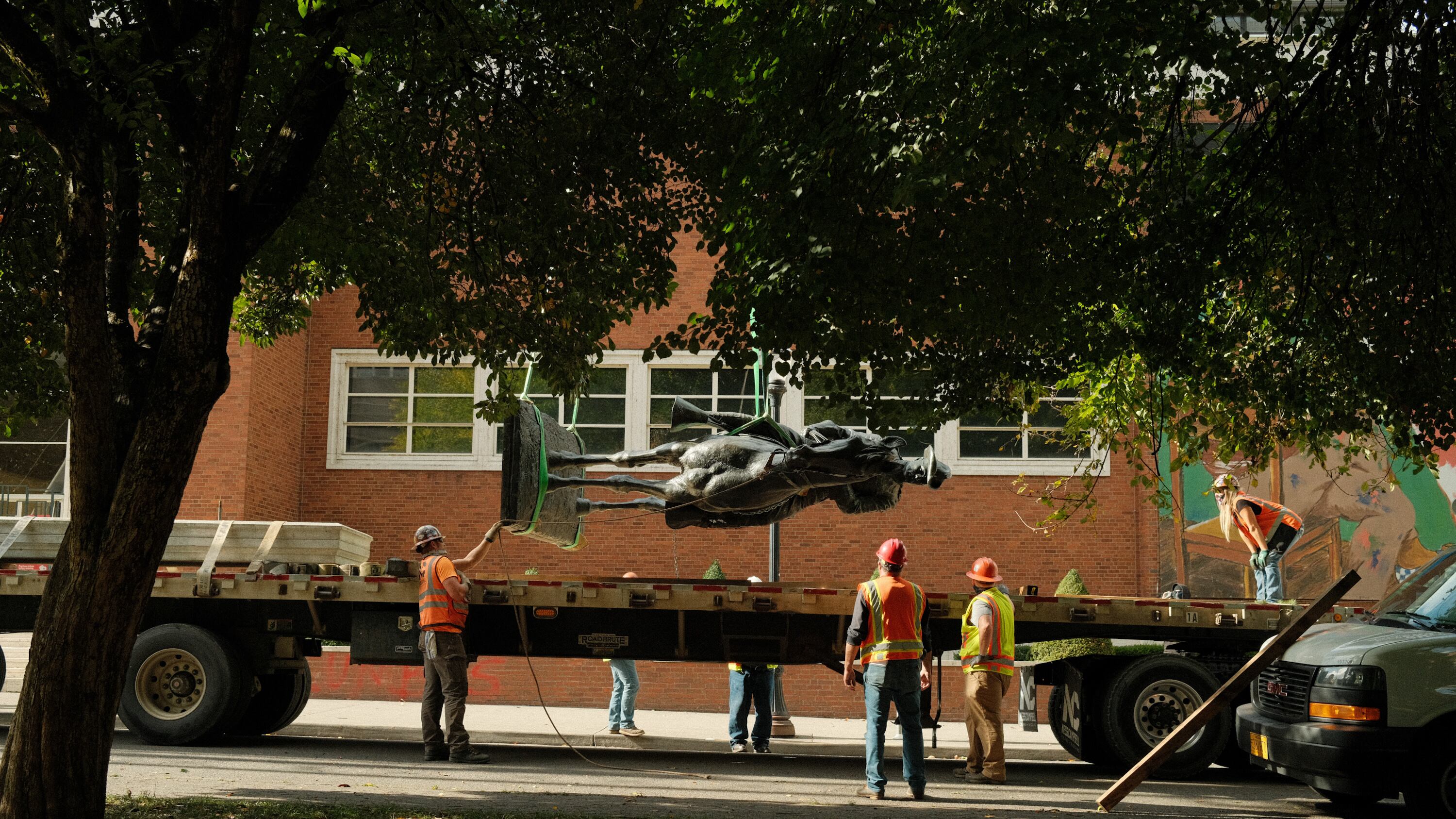As protesters continue to topple statues in Portland, a University of Oregon professor is conducting a study about what monuments in this country say about the United States—or, more often, what they don't say.
Geographer and ethnic studies professor Laura Pulido has begun examining over 2,000 historical landmarks around the country to see how many address racial injustice directly related to each site.
Perhaps unsurprisingly, most of them don't.
"The U.S. continues to be a country of intense racial conflict," Pulido told the university. "One reason for this is our refusal to acknowledge the truth of our past. Racial tension will continue to plague us until we truly reckon with our history."
In Oregon, that includes the End of the Oregon Trail in Oregon City, which according to Pulido contains only one panel about an Indigenous woman's experience with forced displacement, and Fort Harney, which refers to land taken from Indigenous people as land "restored to the public domain."
"Erasures and omissions are not accidental or due to ignorance; rather, they are deliberate acts of forgetting," says Pulido. "And forgetting is a distinct kind of memory that serves a particular purpose, in this case, white innocence."
This past summer has seen an international reckoning with who is and who isn't recognized by public art, including here in Portland. In the past two weeks alone, Portland protesters have toppled three statues around the city, representing Abraham Lincoln, Teddy Roosevelt and, last night, newspaper editor Harvey Scott.
Related: What Happens to a Public Statue After It's Toppled by Protesters?
